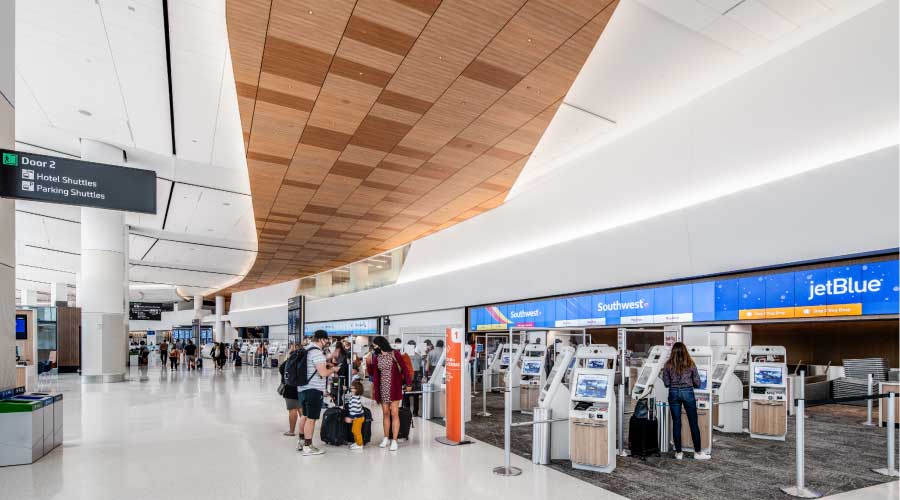USGBC Perspective: Education @USGBC To Teach Green Building Best Practices
In the constantly evolving world of green building, it is increasingly critical for LEED professionals to have access to top-notch education to advance and maintain their knowledge of best practices in the design, construction, and maintenance of high-performing structures. With this need in mind, in January 2014 the U.S. Green Building Council launched Education @USGBC, a new, comprehensive, simple-to-use platform with courses related to sustainability and LEED designed by the world's learning educators. With Education @USGBC, it is now possible to advance one's knowledge of green building and connect and collaborate with leading practitioners around the world — online, at any time.
The-one stop shop provides high quality education, and includes courses created by USGBC, as well as courses created by USGBC Education Partners. The Education @USGBC subscription offerings include technical content, case studies, and Q&A sessions with the creators of the LEED rating systems and experienced practitioners. Building professionals can use these courses to expand their knowledge of green building, discover helpful tips for practice and learn from others' experiences — all while earning CE hours.
Key features of Education @USGBC include:
- Anyone can learn: Practitioners can learn and grow their green building knowledge online, any time and anywhere.
- An enhanced platform: The system features a simple-to-use interface with courses designed by the world's leading educators, providing the best education in the market. There's also a link available to download videos for offline viewing.
- Best-in-class content: Education @USGBC includes unlimited access to webinars, courses and the latest LEED v4 content, pre-approved to fulfill credential maintenance for LEED credential holders. New courses will be added on a regular basis throughout the year. The platform also includes unlimited access to the LEED v4 web-based reference guide.
- Automated reporting: For LEED credential holders, USGBC will automatically upload hours earned into a credentialing account upon passage of the course quiz, so users will not need to self-report. Each user will also be provided with a certificate upon completion of each course to retain for his or her records. AIA credential holders will also have the opportunity to add their AIA numbers to their USGBC accounts, enabling automated reporting of all CE hours earned.
- Web-based reference guide: The fully interactive Web-based reference guide is a simple, one stop shop for all LEED v4 resources for all rating systems, including more than 50 multimedia modules, tutorials and case studies to help all LEED projects succeed.
Individuals can subscribe to Education @USGBC for only $199 for a full year of unlimited access from the date of purchase. Discounts are available for USGBC members, students and organizations.
As the launchpad for collective growth, innovation and leadership, the platform is poised to provide significant momentum to the transformative mission of the green building movement. Visit usgbc.org/education-at-usgbc to learn more.
Green Building Report
Briefings
Platinum in San Diego
The San Diego International Airport is the first airport in the world to earn a LEED Platinum certification. The airport earned Platinum for its 460,000-square-foot expansion of Terminal 2 West, as well as 1.3 million square feet of new "aircraft apron" and taxiway areas. The terminal expansion project includes solar panels, low-flow water fixtures, no-irrigation landscaping, energy efficient lighting, and a design to maximize daylighting. The project was completed on time, and approximately $45 million under budget.
IPCC and Buildings
The new Intergovernmental Panel on Climate Change report says that greenhouse gas emissions grew nearly twice as quickly in the past 10 years as they did in the previous 30. The report calls for emissions to be reduced by as much as 70 percent by 2050 in order to limit the average global temperature increase to 2 degrees C. Specifically, the report calls for cutting emissions from electricity production to near zero, meaning a large-scale switch to renewable energy, and a phase-out of coal. The report also calls for buildings to be 50 to 90 percent more efficient — buildings account for 32 percent of global energy use. The technology to do so and break from "business as usual" already exists, the reports says.
Efficiency is Cheapest
A new report from the American Council for an Energy-Efficient Economy says that energy efficiency costs utilities two to three times less than traditional power sorts — an average of 2.8 cents per kilowatt hour. Energy efficiency programs aimed at reducing energy waste are the cheapest method of providing Americans with electricity, the report says. For more information on the report, including how efficiency compares costwise to other sources of electricity, visit: http://bit.ly/ACEEE2014
U.S. Green Building Council
2101 L Street, NW, Suite 500
Washington, DC 20037
1-800-795-1747
Web site: www.usgbc.org
E-mail: info@usgbc.org
CHAIR
George Bandy
Interface
CHAIR-ELECT
Marge Anderson
Energy Center of Wisconsin
IMMEDIATE PAST CHAIR
Allan Skodowski
Transwestern
SECRETARY
Elizabeth Whalen
CalAg LLC
TREASURER
Stuart Carron
ENERGIZE RE LLC
FOUNDING CHAIRMAN
S. Richard Fedrizzi |
Related Topics:














